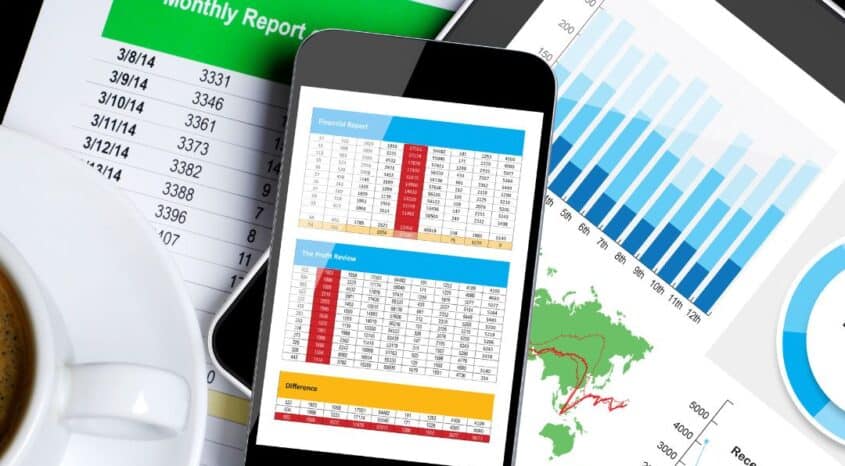In the current e-commerce environment, brands only have to blink and the goalposts move. Consumer expectations are higher than ever – and demands rapidly change as new technologies, communications channels and ‘ways to buy’ emerge.
Needless to say, it can leave even the savviest modern e-commerce companies scrambling to keep up. Start-ups and established e-commerce businesses alike are now thinking carefully about the software systems they have in place, and whether they are really the best option for staying ahead of the competition and enjoying long-term success.
The latest research by Brightpearl has revealed that a whopping 90% of US brands with a $5-50 million turnover are concerned that a ‘single vendor’ ERP approach to e-commerce is ‘limiting their ability to quickly deploy better shopping experiences, keep up with customer expectations and sell more’.
So is monolithic e-commerce still a good idea? Are the hordes of brands switching to microservices on to something? This guide will reveal all – and help you decide on the right approach for your business.
Monoliths
A monolith is a large system with a single code base that’s usually deployed as a single unit. Most monoliths consist of four major components: a user interface, business logic, a data interface and a database.
Traditional, monolithic e-commerce platforms were originally created for ecommerce brands that primarily reached customers via static, desktop computers. They offered (and still offer) a ‘one size fits all’ solution, allowing businesses to manage every element of the online shopping experience – from showcasing products and managing stock to processing transactions and organising shipping – on a single system.
While the e-commerce market was still taking off, monoliths offered businesses a simple and clear way to manage their front and back end. However, the arrival of mobile commerce – buying things over the internet using a mobile device and via apps – sparked a period of major change.
Leading brands across the US are now admitting that being locked into a service from an ERP vendor is holding them back.
Brightpearl research has shown 71% of merchants with a turnover of $5-50 million, and 52% of those bringing in more than $50 million, agree that their current ERP makes it ‘nearly impossible to integrate new, better e-commerce technology from other vendors’ at the pace they would like. It’s a similar story in the UK, with half of all British firms saying the same thing.
It’s clear, then, that to successfully compete in the current ecommerce environment, brands must be able to flex and adapt to market trends linked with mobile technology. While monoliths were once the obvious choice for burgeoning ecommerce businesses, now brands big and small are seeking a more modern alternative.
So how can you decide if monolithic e-commerce is right for you? Let’s take a look at some pros and cons…
The pros of monoliths
👍 Simplicity. Monolithic ecommerce software can be the simple, easy choice. With only one large system in place, there’s only one system to worry about.
👍 Long term legacy. Legacy ERPs and other monolithic architecture take a long time to deploy and, by design, are difficult to make changes to. This means that once a monolith is in place, it’s usually in place for the long haul.
👍 Good for small start-ups. For small and micro businesses that aren’t 100% sure what they need, or for those with a simple, narrow focus that won’t need to move with the times or quickly make changes, monoliths can be an attractive solution.
The cons of monoliths
👎 Outdated. It’s widely recognised in the e-commerce industry that no single vendor in the current environment can provide the best functionality for all the applications needed to successfully run a modern e-commerce business.
👎 Poor scalability. Monolithic architecture is notoriously inflexible and difficult to scale. It’s also difficult to integrate with other tech platforms and API. Any required changes are expensive and can take many months to achieve, because they must be applied to the whole system. This makes monoliths troublesome for fast-growing businesses.
👎 Prone to problems. System crashes are part and parcel of running a business using a legacy ERP. The interlinked nature of monolithic architecture means one small failure can have a huge knock-on impact. It’s also worth being aware that repairs to large monolithic systems can be slow and expensive.
Monoliths could be for you if…
✔️ You’re just starting out
✔️ Rapid growth is unlikely
✔️ You don’t mind long waits
Microservices
A microservices architecture is a set of loosely coupled services that collaborate to create an operations system. Microservices are modular; they connect through API gateways to create a flexible, scalable suite of services which run independently to each other.
Microservices has become a buzzword in recent years – but it’s anything but a fad. Major players such as Netflix, eBay, Amazon and Spotify have switched from monolith to microservice architecture – and swathes of smaller businesses are doing the same.
Brightpearl’s research revealed that more than half (52%) of US companies turning over $5-50 million, along with 41% of those with turnover of more than $50 million, believe the adoption of Application Programming Interface (API) and microservices is ‘much more urgent’ over the next 12 months compared to the previous year.
That’s because microservice systems enable businesses to adapt to new innovations – including mobile commerce – quickly and easily. Brands can pick and choose the best-in-breed apps and solutions that work for them, switching and adding as their business grows.
But with change always on the horizon, how can you be sure a microservice system is best for your business? Let’s investigate the pros and cons…
The pros of microservices
👍 Microservices mean agility. Because the various components in a microservices system operate independently, innovations and new integrations are quick and easy. Initial implementation is much quicker compared to monoliths (we’re talking days/weeks as opposed to months/years) and the systems are designed to adapt and scale as businesses do – the sky’s the limit.
👍 Better customer experiences. Modern consumers want modern shopping experiences and the open API approach of a microservice architecture is a powerful tool for delivering positive customer experiences. As customer expectations continue to evolve, so can microservices – which means fast-growing businesses can stay ahead of the curve (and the competition).
👍 Easier to maintain. Because each component in a microservices system is run independently, faults can quickly be isolated and fixed – dramatically reducing downtime. Microservice architecture typically involves a smaller codebase, which makes it easier to scale, and far more resilient.
The cons of microservices
👎 It requires mindset change. Switching from a legacy ERP or other monolithic system to microservices means a new way of doing things – the right mindset is essential.
👎 Infrastructure change. Microservices can require changes to the wider infrastructure of a business and any monitoring tools that are used.
👎 Requires technical expertise. Managing and maintaining the various elements of a microservices system can require expertise and experience to get the best results. This can be sourced either from an in-house team or provided by a trusted platform. Microservices could be for you if…
✔️ You run a fast-growing, ambitious brand
✔️ You want the tools to delight modern customers
✔️ You need fast, flexible solutions
The Brightpearl View
Brightpearl is a scalable, rapidly deployed retail operating system with a difference. We believe brands need – and deserve – better than a ‘one size fits all’ approach.Brightpearl offers a world class suite of built-for-retail, scalable integrations that enable modern brands to keep up with consumer demand in order to thrive today, and in the future.
Book a free demo today




